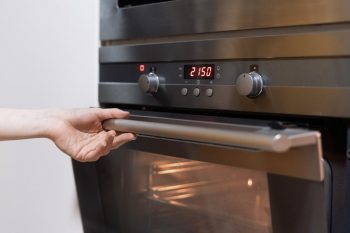
The dryer vent hose is an essential part of your home’s ventilation system. When it becomes disconnected, it can cause a number of issues, such as increased humidity, lint buildup, and inefficient drying. In this comprehensive guide, we will walk you through the process of reattaching your dryer vent hose and provide tips for ensuring a secure and long-lasting connection.
To reattach a dryer vent hose, first unplug your dryer and disconnect the existing vent hose by loosening the clamps or peeling off the foil tape. Clean any lint or debris in the area. Check the hose for damage and replace it if necessary. Clean the vent hose to remove any lint buildup. Reattach the vent hose to the dryer and to the wall vent using clamps or foil tape. Run the dryer and observe the hose to ensure a secure connection. Regular maintenance and cleaning can prevent future issues.
Identifying the Problem
Before you can reattach the dryer vent hose, you first need to identify the problem. There are several key signs that a dryer vent hose needs to be reattached:
- Increased humidity when the dryer is running
- Excessive lint in the laundry room
- Clothes are not drying efficiently
- Visible damage to the hose or connections
If you notice any of these signs, it is time to inspect your dryer vent hose and reattach or replace it as necessary.
Tools and Materials Needed
You will need the following tools and materials to reattach your dryer vent hose:
- Screwdriver
- Pliers
- Shop Vac or Canister Vacuum
- Existing Vent Hose (or new hose if the old one is damaged)
- Foil duct tape or hose clamps
Disconnecting the Existing Dryer Vent Hose
Before you can reattach the dryer vent hose, you will need to disconnect the existing one. Be sure to unplug your dryer and turn off the gas valve if necessary before proceeding.
- Gently slide the dryer away from the wall.
- Loosen the vent hose clamps with a screwdriver or peel off the foil tape.
- Carefully pull the vent hose away from the dryer’s exhaust port and the wall vent.
- Clean any lint or debris that may have accumulated in the area.
Reattaching the Dryer Vent Hose
Once the area is clean and the old hose is removed, you can begin the process of reattaching the dryer vent hose.
- Check the vent hose for any damage. If it’s in good condition, you can reuse it. If it’s damaged, replace it.
- Clean the vent hose to remove any lint buildup.
- Attach the vent hose to the back of the dryer using a clamp to secure it.
- Attach the vent hose to the dryer vent hole in the wall using the existing clamp.
- Turn the dryer on and observe the hose for a few minutes to ensure a secure connection.
Preventing Future Issues
To prevent future issues with your dryer vent hose, follow these precautions:
- Regularly inspect and clean the vent hose and the vent itself to prevent lint buildup.
- Use the correct type of hose and ensure it is secured properly.
- Cut the hose to the appropriate length and keep it straight and unobstructed.
- Avoid using screws or rivets in the duct joints as they can encourage lint collection.
By following these steps, you can ensure a secure and long-lasting connection for your dryer vent hose. If you continue to experience issues after reattaching the hose, consider consulting a professional for assistance.
Frequently Asked Questions
What type of hose is best for a dryer vent?
The best type of hose for a dryer vent is a flexible aluminum foil hose. This type of hose is heat resistant and easy to install. Avoid using plastic or vinyl hoses, as they can be a fire hazard.
How often should I clean my dryer vent hose?
It is recommended to clean your dryer vent hose at least once a year. However, if you notice that your dryer is not drying clothes as efficiently as before, it might be a sign that the vent hose is clogged and needs cleaning sooner.
How long should my dryer vent hose be?
The length of your dryer vent hose depends on the distance between your dryer and the vent hole in the wall. However, it’s recommended to keep the hose as short and straight as possible for efficient drying. The maximum length allowed for a dryer vent hose is generally 25 feet, but this can vary depending on the number and angle of bends in the hose’s path.
Can I use duct tape to secure the dryer vent hose?
While duct tape can temporarily hold the dryer vent hose in place, it is not recommended for long-term use as it can deteriorate over time due to the heat from the dryer. Instead, use foil duct tape or hose clamps to secure the hose, as these are more resistant to heat.
What if my dryer vent hose keeps disconnecting?
If your dryer vent hose keeps disconnecting, it may be due to a poor connection or a damaged hose. Make sure the hose is properly secured with a clamp or foil duct tape. If the hose is damaged, it’s best to replace it. If the issue persists, consider consulting a professional.












